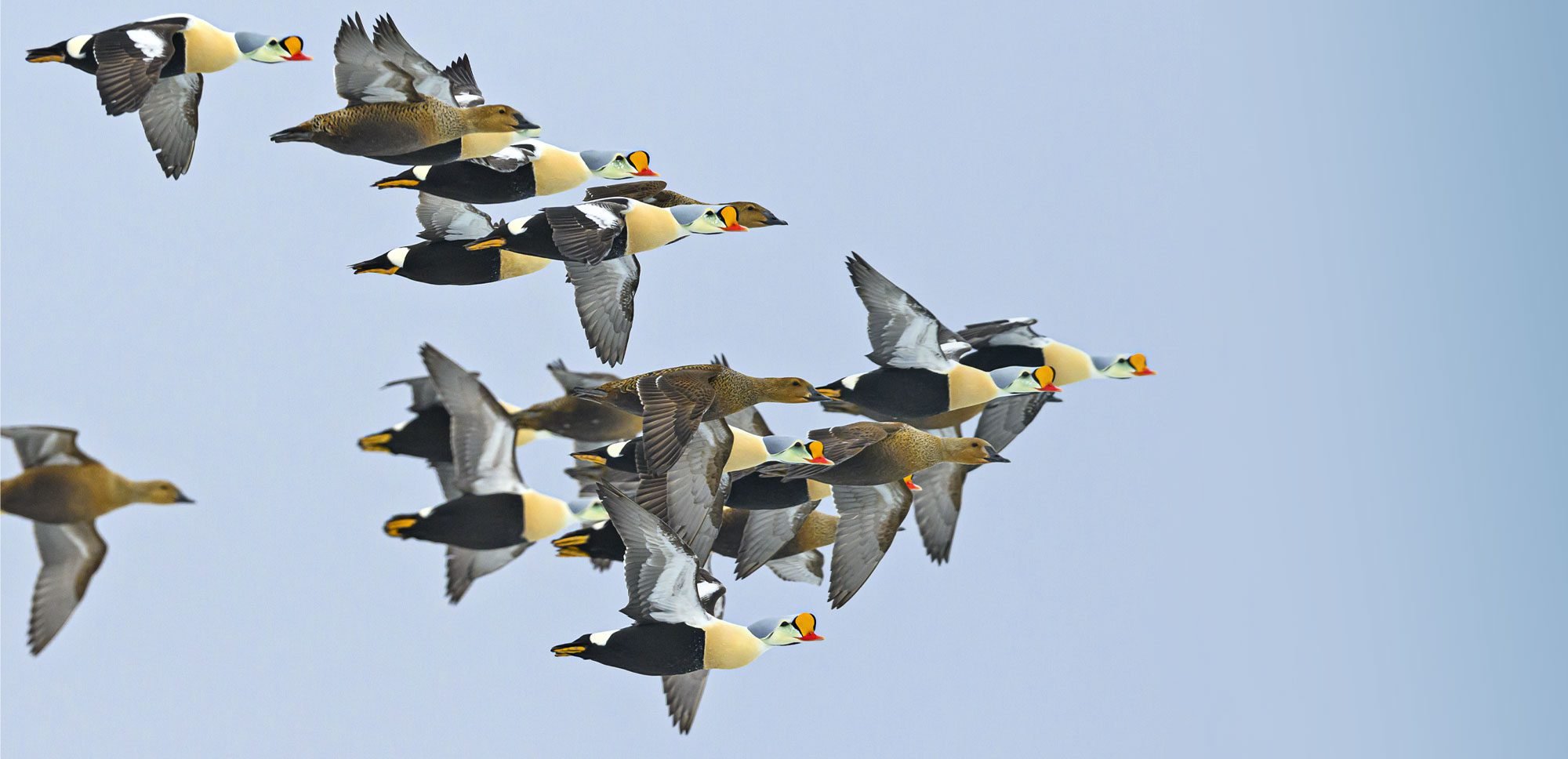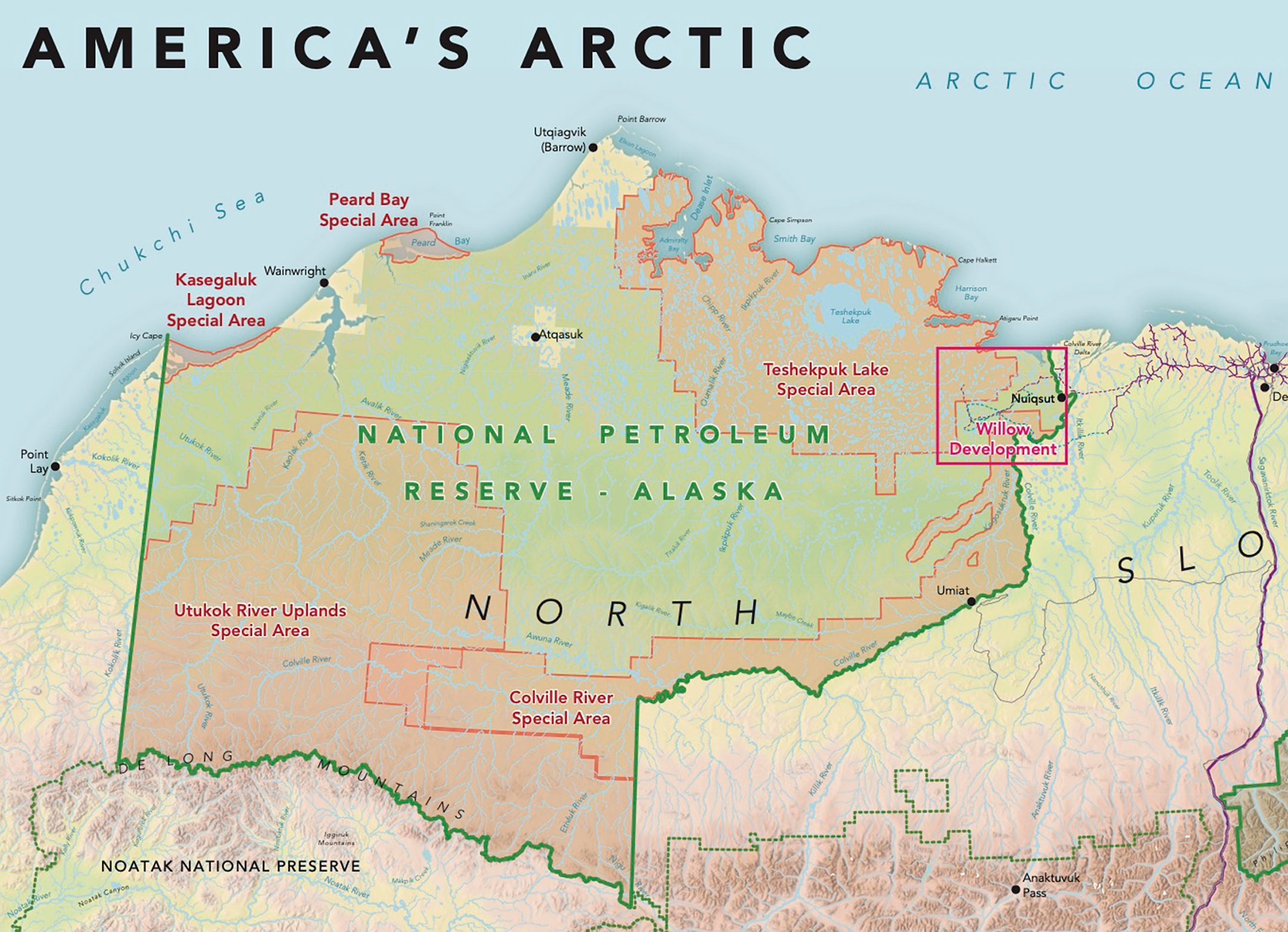Special Areas of the Western Arctic
TESHEKPUK LAKE SPECIAL AREA
At more than 200,000 acres, Teshekpuk Lake is larger than Lake Tahoe and an annual destination for millions of birds from around the world. The lake and its surrounding wetlands are among the most vital in the global Arctic for both biodiversity and safeguarding the planet from the worst effects of climate change. The area is an enormous carbon sink, helping stabilize planetary temperatures in regions far removed from the Arctic itself.
COLVILLE RIVER SPECIAL AREA
The Colville River is the largest river in Arctic Alaska, stretching for 300 miles and encompassing 2.4 million acres of riparian habitat surrounded by mountainous bluffs. The rugged peaks and cliffs along this river are critical habitat for globally important concentrations of Arctic-nesting raptors, such as peregrines and golden eagles. The Colville Special Area is also home to the Liscomb Bone Bed - the most prolific single deposit of dinosaur fossils on earth!
UTUKOK RIVER UPLANDS SPECIAL AREA
The Utukok Uplands are the largest intact grassland ecosystem left in the United States. Fed by the Utukok River, this nutrient-rich landscape supports a teeming population of wildlife including caribou, wolves, grizzlies, foxes, wolverines, and more. A vast reserve of coal lies beneath the northern two-thirds of the uplands, making it a target for energy development.
KASEGALUK LAGOON SPECIAL AREA
This coastal landscape tucked along the Chukchi Sea is the choice summer habitat for spotted seals and passing whales, and a migration rest stop for tens of thousands of waterfowl, loons, and shorebirds from around the world. The lagoon is a nursery for newborn beluga whales and mothers, and a critical feeding ground for American polar bears.
PEARD BAY SPECIAL AREA
Peard Bay is another critical coastal special area, vital as denning and feeding grounds for polar bears. As climate change reduces annual sea ice, protecting key habitat like Peard Bay will be crucial to the survival of polar bears. The coastal landscape is also important for walruses and seals, which are traditionally harvested by Inupiat subsistence hunters.
The Special Areas in America’s Western Arctic are recognized for their vital biological value. But Special Area status does not provide permanent protections from oil and gas development that threatens the region’s wildlife or releases planet-warming pollution. That’s why safeguarding our Arctic Special Areas continues to be vital in the work to #ProtectTheArctic.
Explore the Teshekpuk Lake Special Area in the 18-min mini doc below from Cornell Lab of Ornithology:
Read more about Teshekpuk Lake bird life in the April 2024 issue of Living Bird Magazine from The Cornell Lab of Ornithology:

Photo by: Gerrit Vyn









